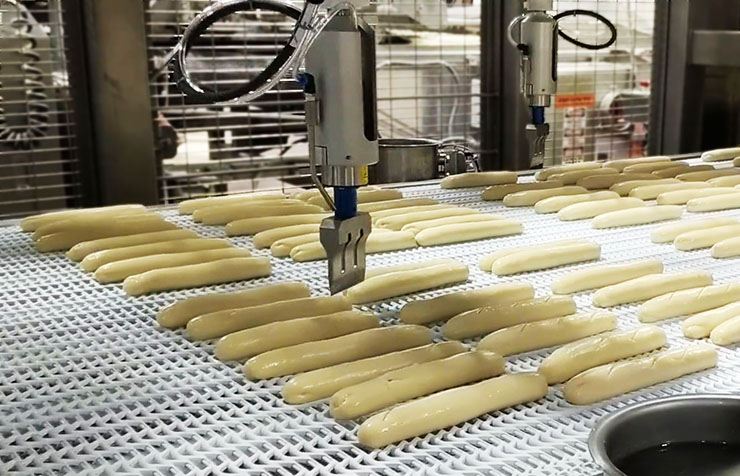
A bread’s crust is its first impression and illustrates the baker’s signature skill. Automated scoring systems can dependably reproduce the craftsmanship of a cut made by an experienced hand. Vision systems and robotics are its eyes and steady hands behind any desired patterns carved into the dough.
Automated scoring systems consistently execute cuts, using conventional cutting, ultrasonic cutting, or waterjet technology. Conventional blades are a simple and cost-effective scoring tool; they follow the shape of a product to score it with cuts made at a consistent depth. Robots can even use multiple blades of this type, as they are lightweight, which will increase production capacity – although with some loss in quality. They may tear the dough, instead of cutting it, making rough edges that, after baking, can tear the packaging. These blades need to be replaced quite often, and the disassembly and cleaning process is complex. The angle of the blade and the single cutting edge limits the possible scoring patterns. Ultrasonic blades use high-frequency vibrations to slice the dough. Dough tearing is limited with this technology, which also prevents the dough from sticking to the blade. With some limitations, the ultrasonic drag blade offers the most versatility in the range of motion, making it suitable for a large variety of products. With waterjet cutting performed by robots, the most complex shapes and designs can be made on doughs of any density, texture and size. This scoring technology excels in efficiency, hygiene and speed.


